How to view and search WooCommerce customer order history
Have you ever wanted to be able to search and filter your WooCommerce customers by their order history? Do you want to find all the customers who have purchased one product but not another? In this tutorial, I’ll show you how to use the Users Insights plugin to view, search, filter, and analyze your WooCommerce customer order history so you can better manage your WooCommerce store and optimize your customer experience.
Benefits of knowing your customer history
Your customers are not all the same. They differ in so many ways. Some are heavy shoppers; others are one-time buyers. One customer might do all their shopping during the holiday season; others are regular all year round. Some customers are loyal to specific products in your store, while others are adventurous and love trying new products.
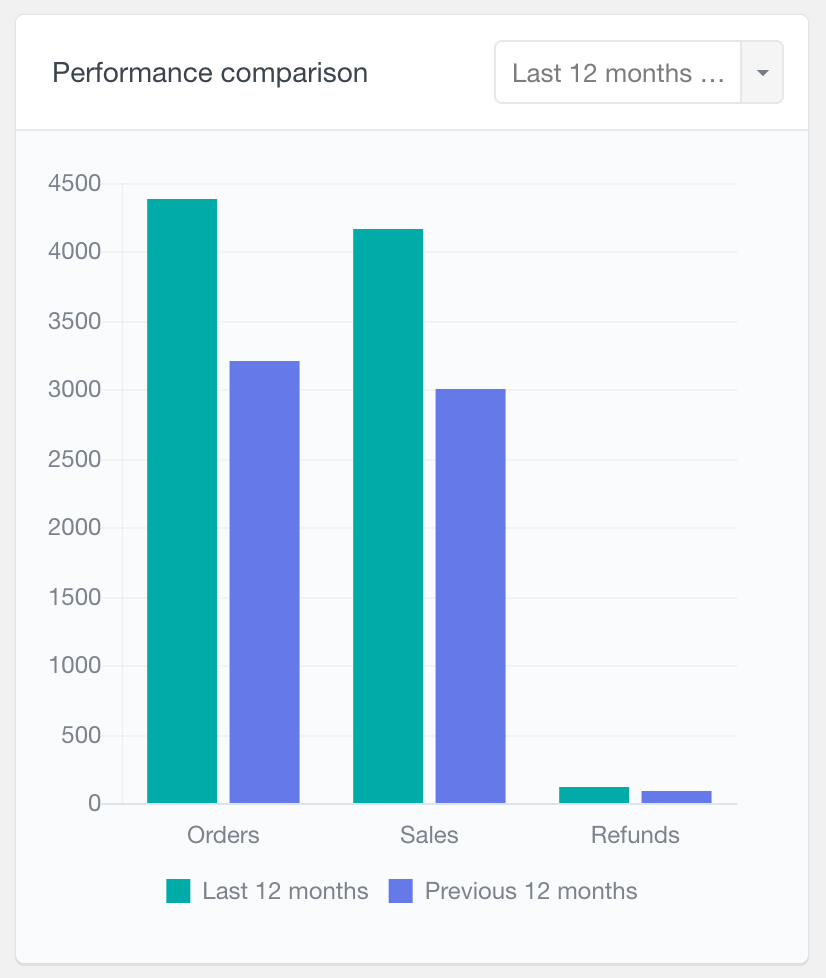
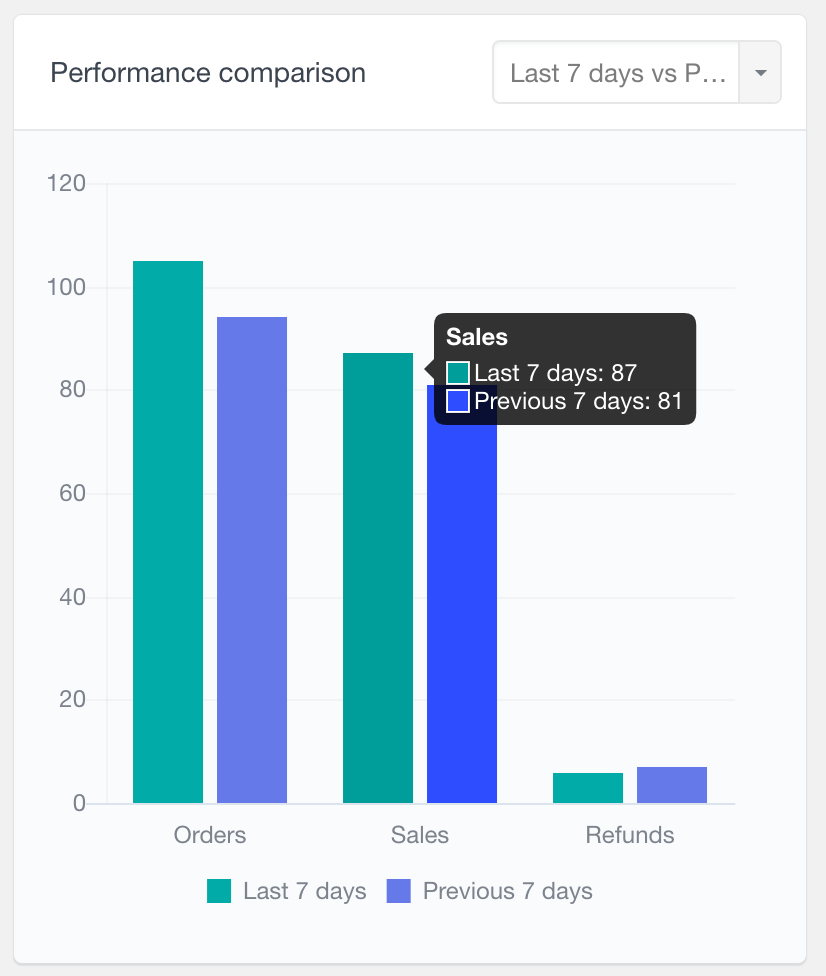
Understanding these different desires, needs, and buying patterns is key, as targeting all your customers with the same message and products might not be the most effective strategy for your WooCommerce store.
Knowing your WooCommerce customer order history can give you a lot of insight on what kind of buyers they are.
Knowing your customer history offers many benefits for businesses, including a clearer picture of what works and increased sales. Using a customer history plugins is valuable because you can use this information to create different marketing strategies curated for specific customers. For example, you can:
- Create a campaign that rewards your most loyal customers by offering them discounts and rewards.
- Create an email campaign targeting all customers who have purchased a particular product, offering them a related product or the newest version of the same product.
Getting Started
Before we begin, make sure the WooCommerce module of the Users Insights plugin is active. You can manage this in the Users Insights -> Settings section. This module enhances Users Insights with tools to view and manage WooCommerce order history and segment customers by their orders.
Since the Users Insights plugin works with registered WordPress users, the following tutorial will only work for your WooCommerce customers who are registered as WordPress users on your online store.
WooCommerce Customer Order History: Filtering by number of orders
One of the columns that the WooCommerce module makes available in the Users Insights table is the “Orders” column. This field shows the number of orders every customer has made in your store. By clicking on the title of the field in the Users Insights table, we can order our customers list by the number of orders they have made, in descending order.
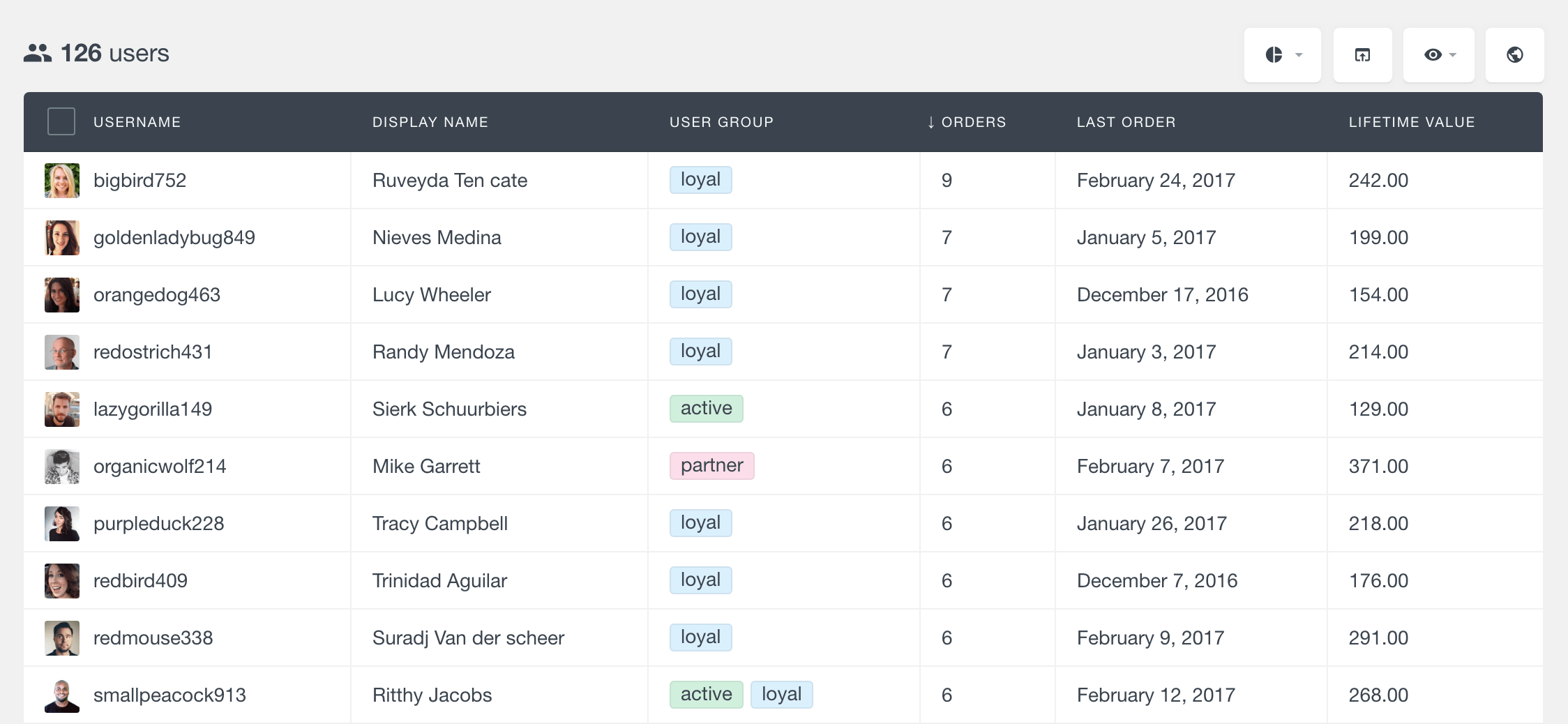
Clicking a second time will sort the customer list by the number of orders in an ascending order. This feature allows you to easily browse and find your customers with the highest or lowest number of orders.
The Number of orders data is also available in the smart filters section. This allows you to filter your customers using the number of orders data. For example, if you want to see a list of all the customers who have made two orders from your WooCommerce store, all you need to do is add a filter “Number of orders is 2”:
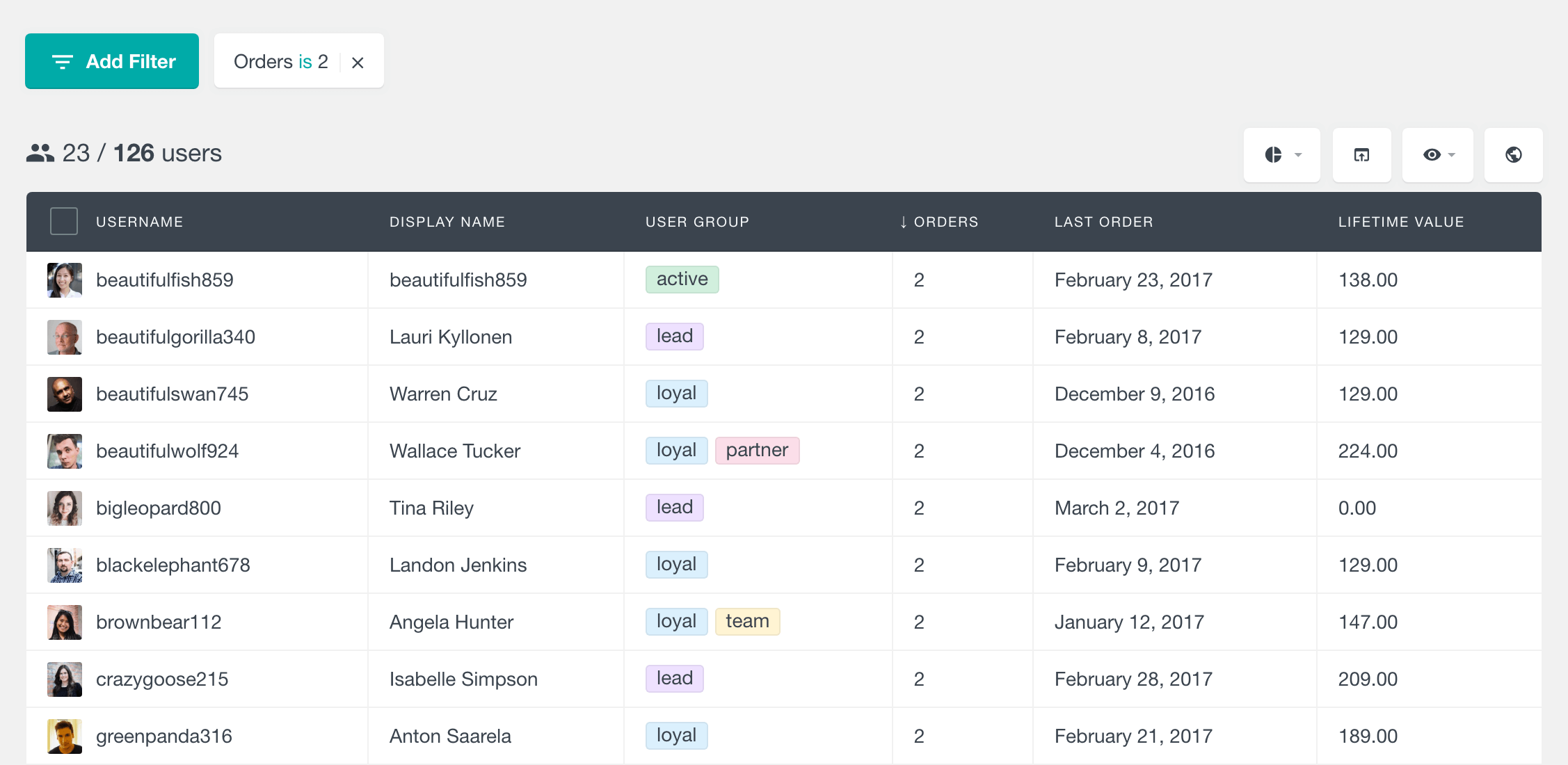
You can also use the operators “is bigger than” or “is smaller than” to show only customers with more or fewer orders than a specific number. For example, here is a list of all the customers who have made more than 5 orders:
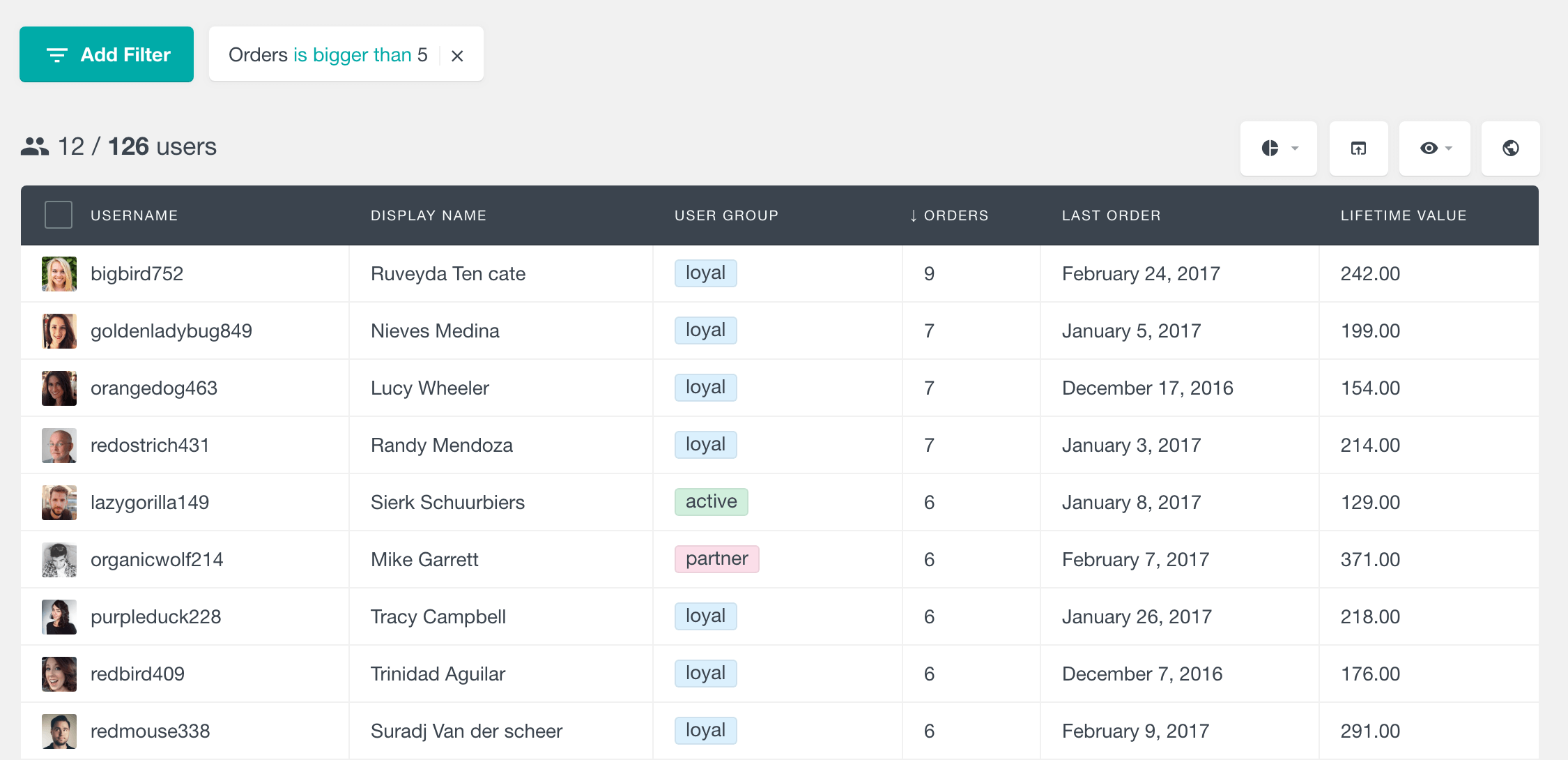
The Users Insights plugin allows you to add multiple filters at once, which means that you can further filter the already filtered list of customers. For example, we can add one filter that lists the customers with at least one order and another one that lists the customers with less than three orders to find the customers with between 1 and 2 orders.
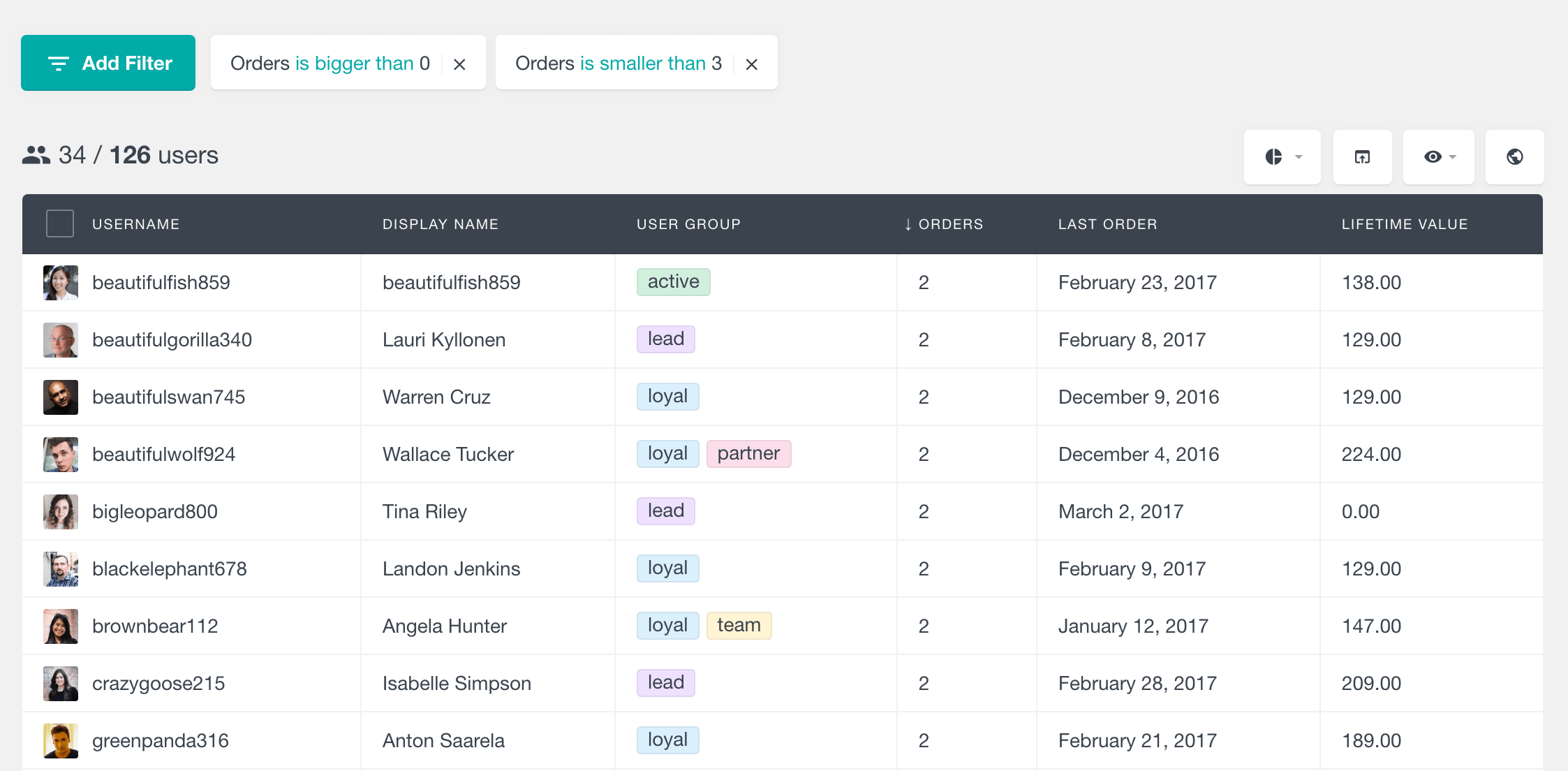
New vs returning customers
The “New vs. Returning Customers” report shows the total number of customers over time, with color-coded sections for new and returning customers. This report lets you quickly visualize the history of products purchased per customer over time. If you want to see only new customers, you can click the “Returning Customers” label to exclude them from the data.
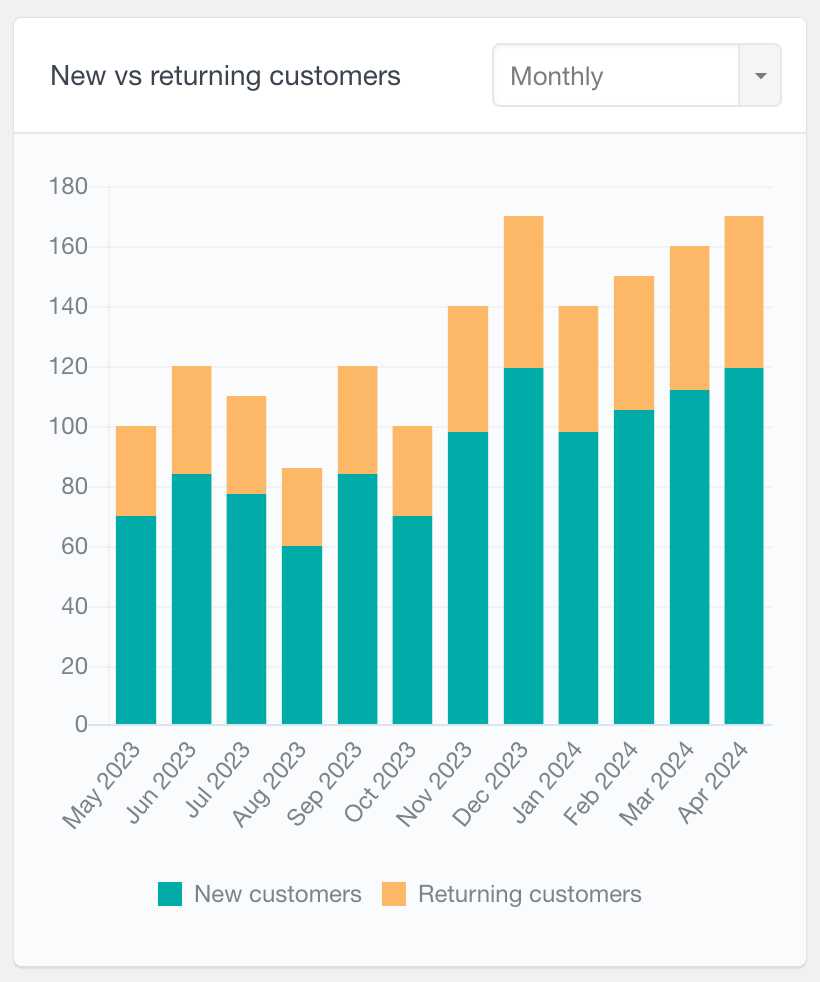
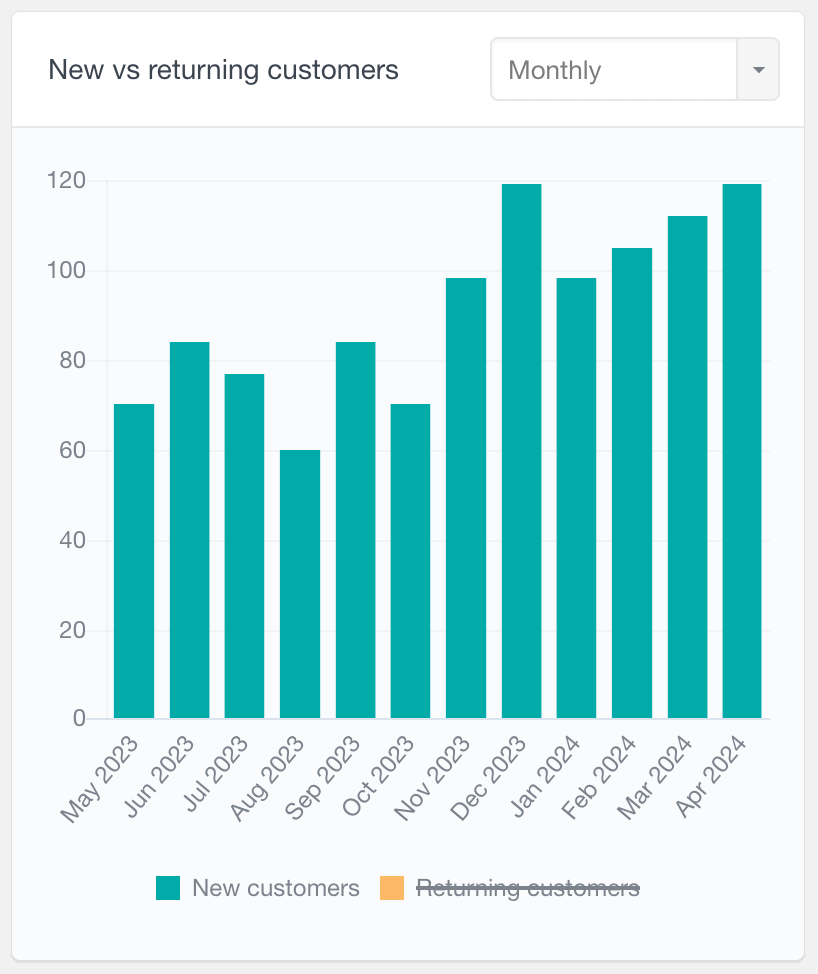
Filtering customers by order status
WooCommerce order statuses are distinct stages through which an order gets processed within WooCommerce. Each order in your store will have an order status assigned to it to inform you of where it’s at in the fulfillment process. The following order statuses are used: Pending payment, Processing, Completed, On Hold, Failed, Canceled, and Refunded.
The WooCommerce module allows you to filter your customers by order status. In this way, if you want to see all the customers who have been refunded, you can add a filter “Order status includes refunded”:
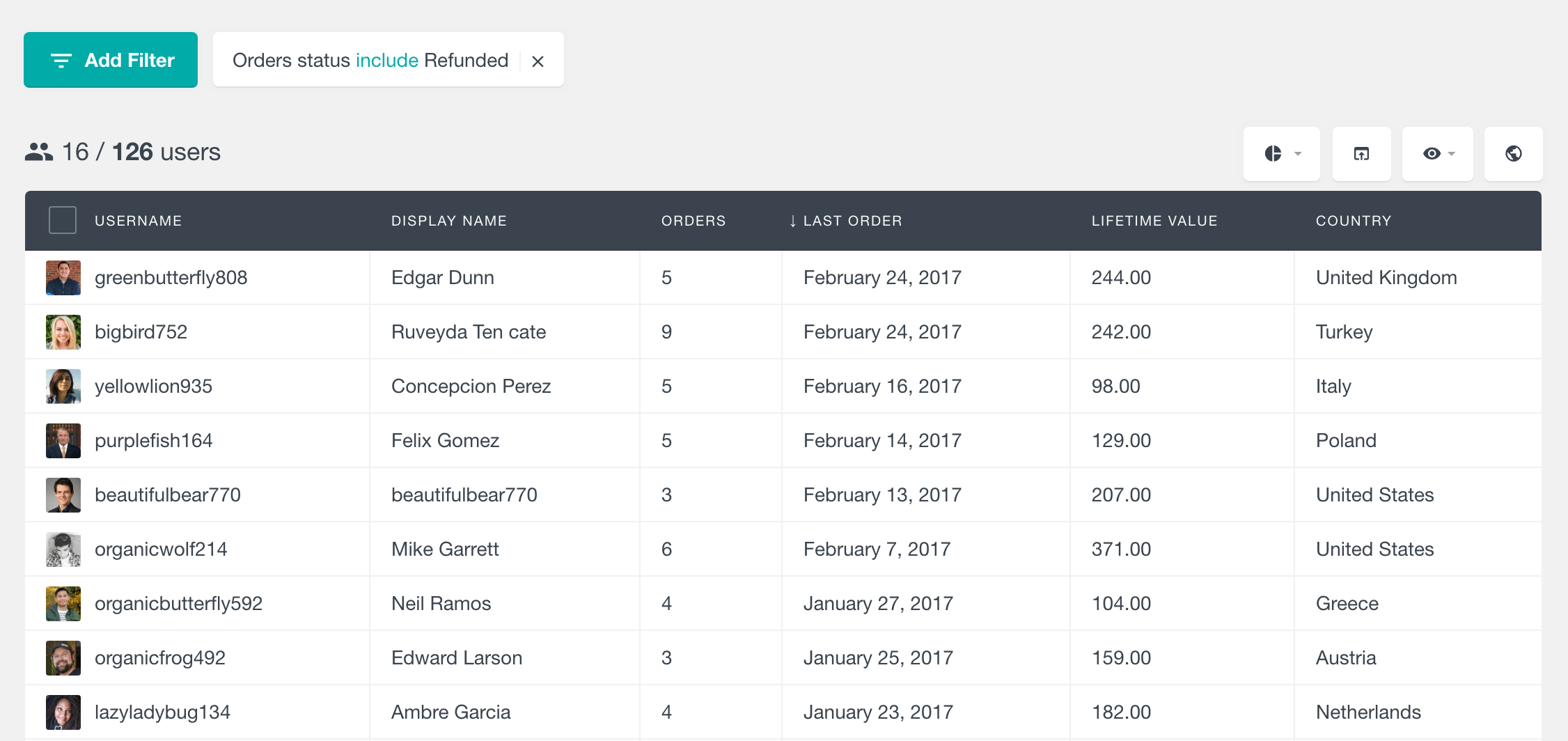
The available options for the order status include/exclude filter are:
- Pending Payment
- Processing
- On Hold
- Completed
- Cancelled
- Refunded
- Failed
Orders by status report
The “Orders by Status” report shows the distribution of order statuses over time, using color coded segments for easy identification. This report is available in the general WooCommerce reports section and in per product and per category reports. You can view the data daily, weekly, monthly or yearly and scroll through historical data to get a full picture.
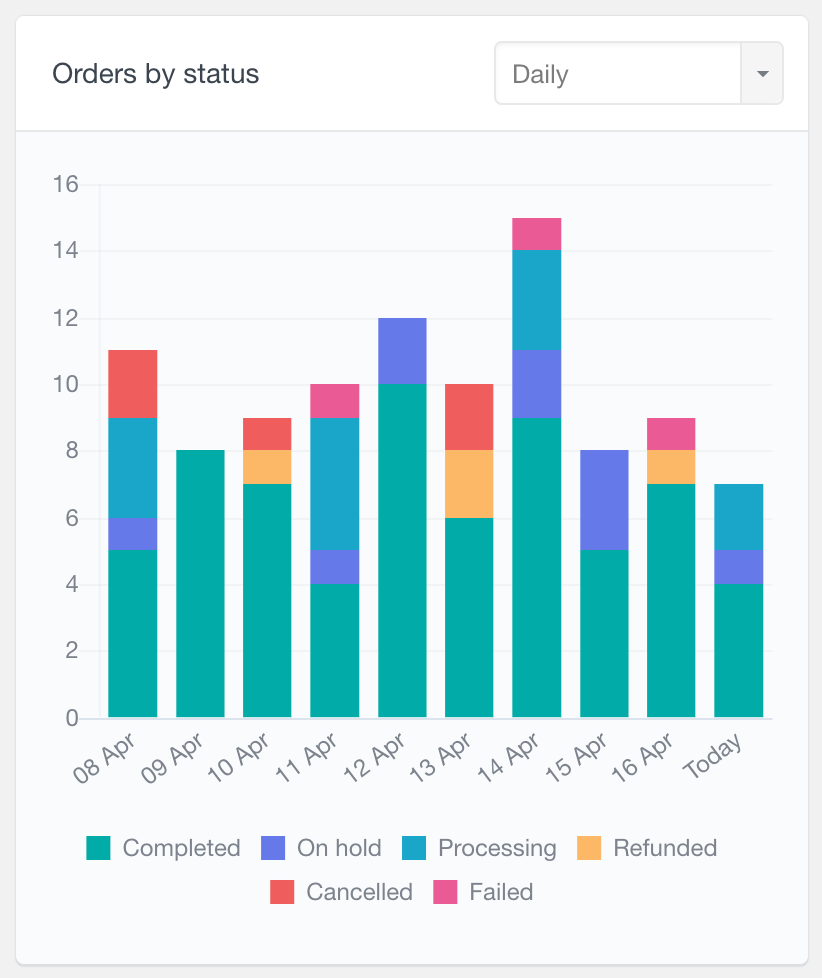
Filtering customers by the products that they have ordered
Another helpful feature that the WooCommerce module adds to the smart filters is the “Ordered Product” filter. This filter allows you to filter your WooCommerce customers by the product they have (or have not) ordered. In the following article, you can learn more about how to filter WooCommerce customers by their ordered product.
Filter customers by order details (Placed an order filter)
Many elements are at play when it comes to filtering WooCommerce customers by order history. That’s why when we use the “placed an order” filter, we get a whole new understanding of our customers. This is possible because this filter combines many aspects of your customer’s orders when filtering them.
4 different options can be used and used in single or multiple filters. They are:
- Order date – select a date range, thus filtering customers who purchased only in that period
- Status – gather different WooCommerce order status
- Order total – filter users by the ticket size, which allows a range of values
- Product – return only users who have ordered specific products
These filters can be mixed with other filters for detailed WooCommerce customer order history lists. They can also be used to gather interesting insights regarding customer history.
For instance, you may have run a campaign or are checking for seasonal sales performance. In this case, the date filter can be a valuable option to filter only users affected by your campaign.
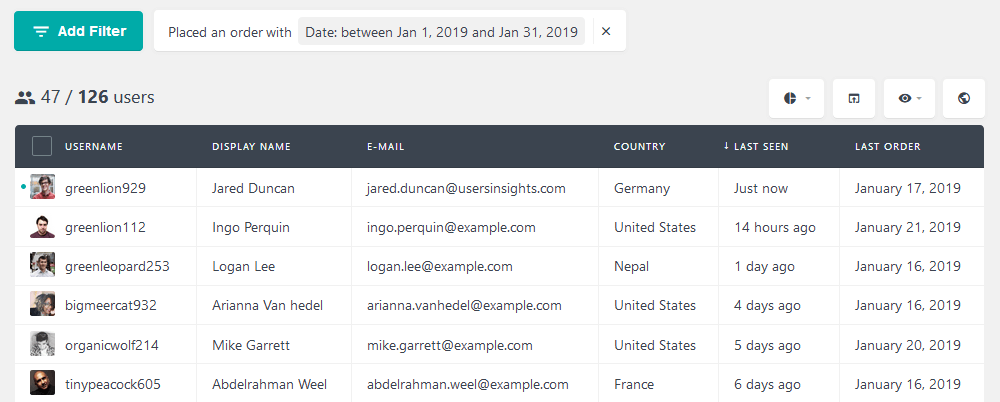
Then, there are the different order statuses. This filter is a straightforward method to check issues in your orders quickly. It’s possible to filter users with refunds pending or canceled orders. Once you identify these users, you can further investigate what is causing these issues.
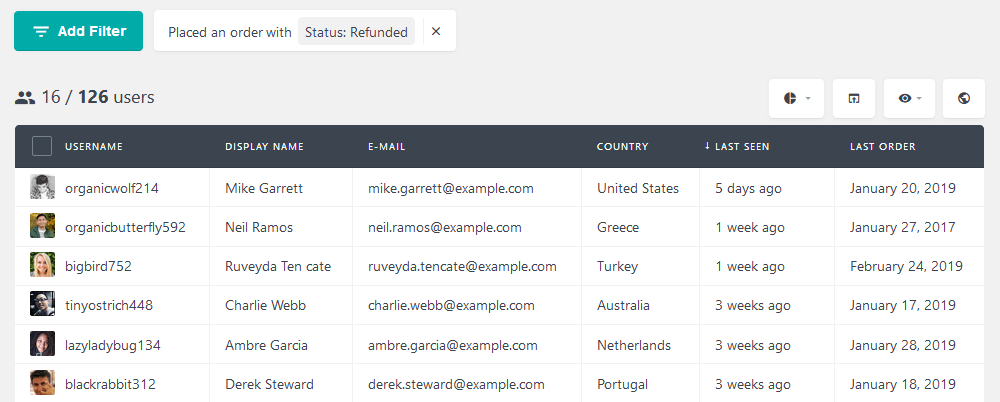
In addition, the status filter can be used as a health check for your site. You can filter users with non-completed orders in the last few days and check back with them. That’s an excellent approach to staying on top of everything and being proactive in customer interactions.
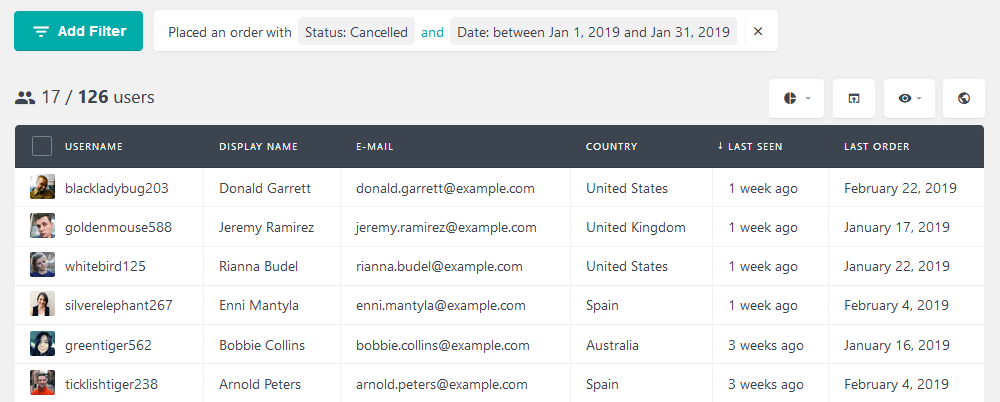
Additionally, order price ranges are a quick way to filter customer history by price. This is an excellent addition to the lifetime value field. Thus, it’s possible to filter customers by each of their individual purchases’ totals and lifetime value.
A quick example of this would be high-ticket customer analysis. If you know that your average ticket size is $120, you can filter all customers with higher amounts. This gives you a list of WooCommerce customer order purchase history for higher-than-average purchase customers.
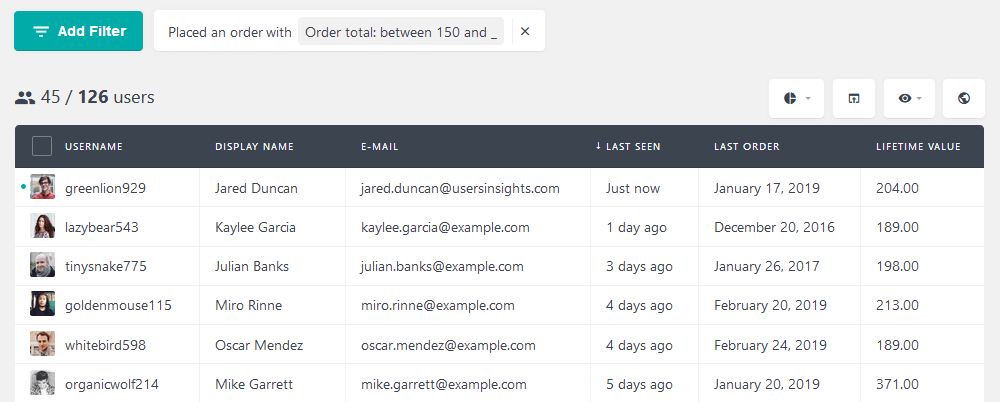
Last but not least, there’s the product filter. These filters give you a WooCommerce customer order history by purchased products. Thus, if you want to know everyone who purchased a specific product, you can search for it:
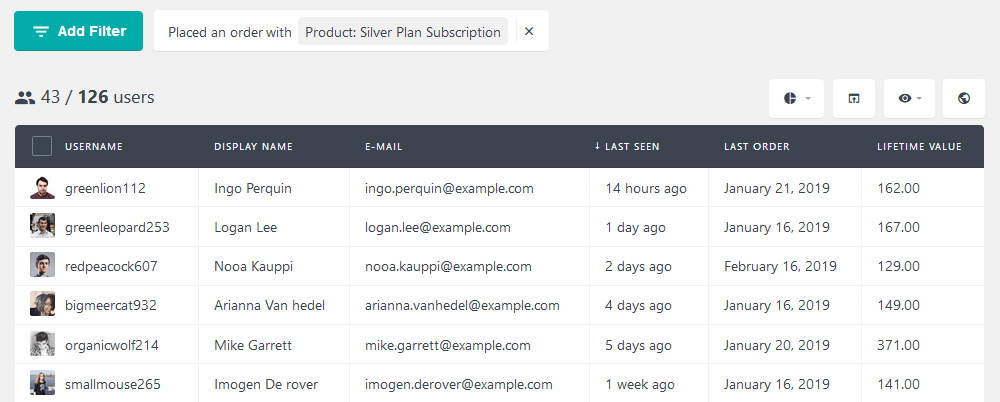
You can combine this filter with others to get better searches. For instance, if you want to list users who bought NinjaProduct last month from the US, you can do that.
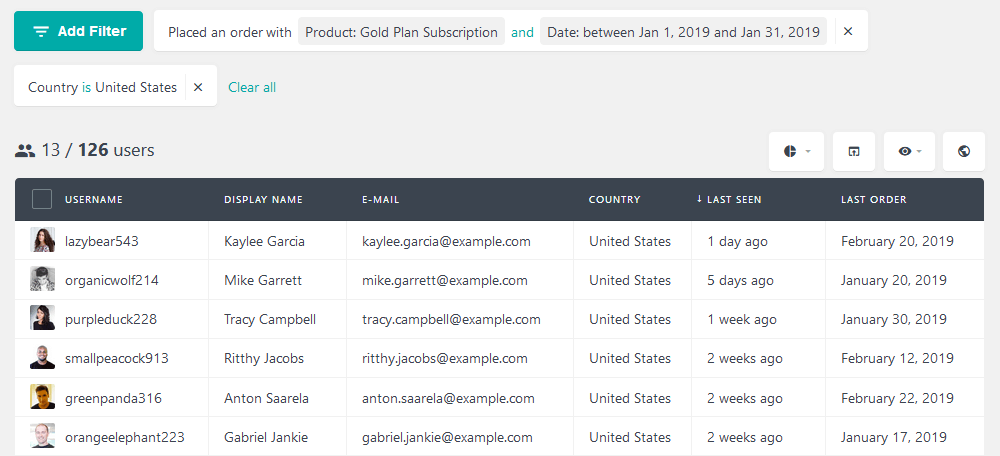
Using the WooCommerce customer order history with other filters
As we already mentioned, the Users Insights filters are stackable. This means that you can use multiple filters to segment your WooCommerce customers by their order history and combine the order filters with the rest of the available filters of Users Insights. Here is an example of a list of all the customers who have ordered a particular product and are from the United States:

Additionally, with the “Has product in cart” filter you can filter your customers by the products that they currently have in their WooCommerce cart. This way you can find customers you are currently on your checkout page or have started the checkout process but have not finished it yet.
Perfomance Comparison report
The “WooCommerce Performance Comparison” report allows you to compare key metrics like orders, sales and refunds between a selected period and the same period last year. This WooCommerce report has options to show data for the last 7 days, last 30 days, last 6 months or last 12 months. As you hover over the chart, tooltips will appear giving you more information on each data point. This report is designed to give you a quick and easy overview of your WooCommerce store’s performance across different timeframes so you can track and analyze trends.


Using lifetime value to search WooCommerce order history
Another handy filter when searching the order history is the Lifetime Value filter. The Lifetime Value field calculates the total customer lifetime of each registered customer and shows you how much each customer has spent in your store. With this field, you can easily customize your order history search to find your most valuable customers.
Let’s see an example. Let’s say you need to find all the customers who have purchased a particular product and spent more than $100 in your store (their total customer lifetime value is more than $100). This can be easily accomplished by combining the Ordered Products filter with the Lifetime Value filter:
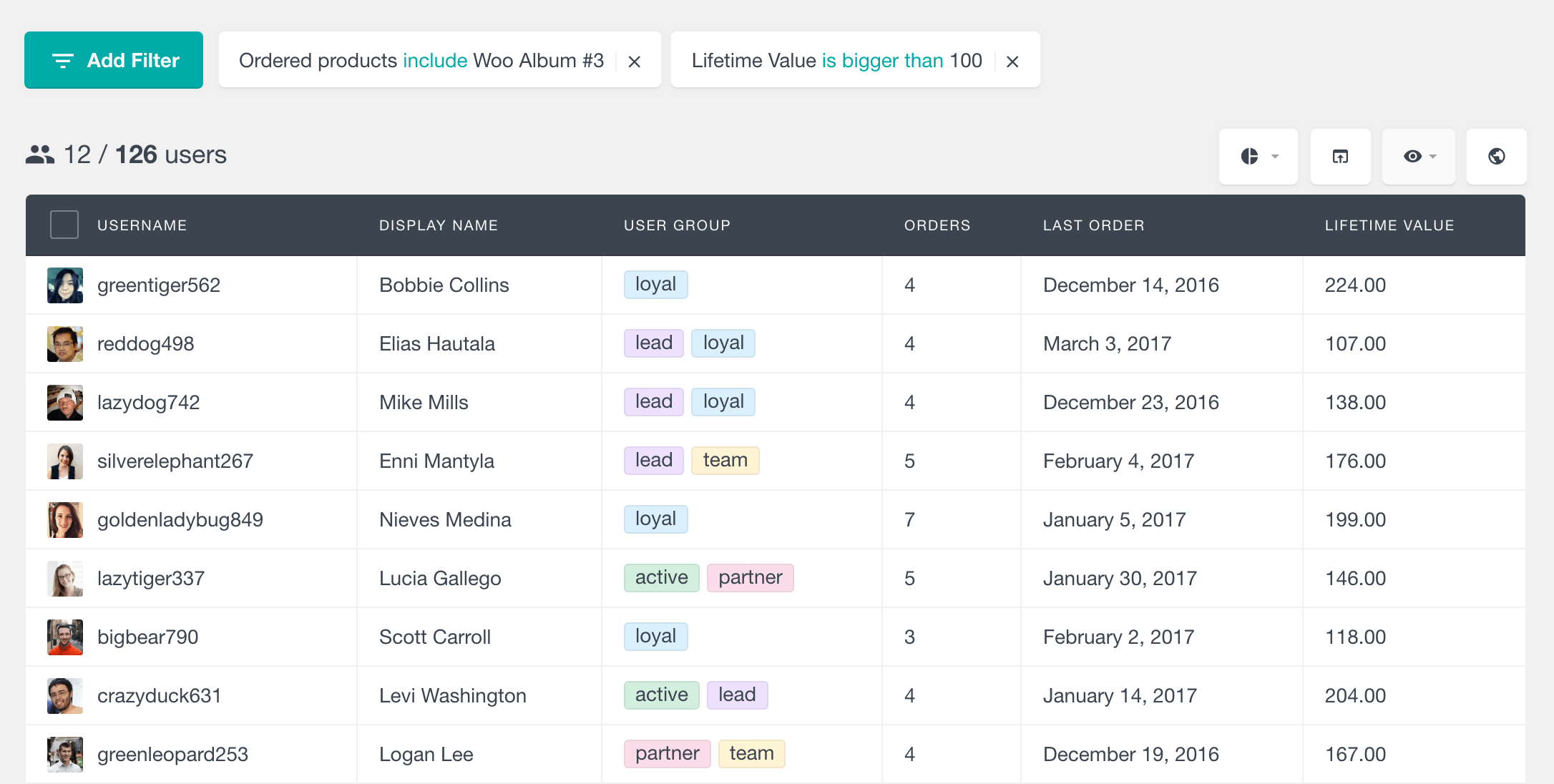
View WooCommerce customer order history on the profile page
The Users Insights custom profile page is the place that includes all of the available customer information for each WordPress and WooCommerce user. The user profile section has a dedicated section from WooCommerce in the activity section. This is where you can view the WooCommerce order summary for each WooCommerce account, list of products purchased, items in cart, and additional info about their WooCommerce customer history, like a list with several of the most recent orders and info about the order status.
Each order has a link to the corresponding WooCommerce order page to view and edit all the order details. The list also includes a link to the WooCommerce Orders List page that shows only the list of orders for this user. You or any admin can access the customer profile page by clicking on the customer username from the Users Insights user table.
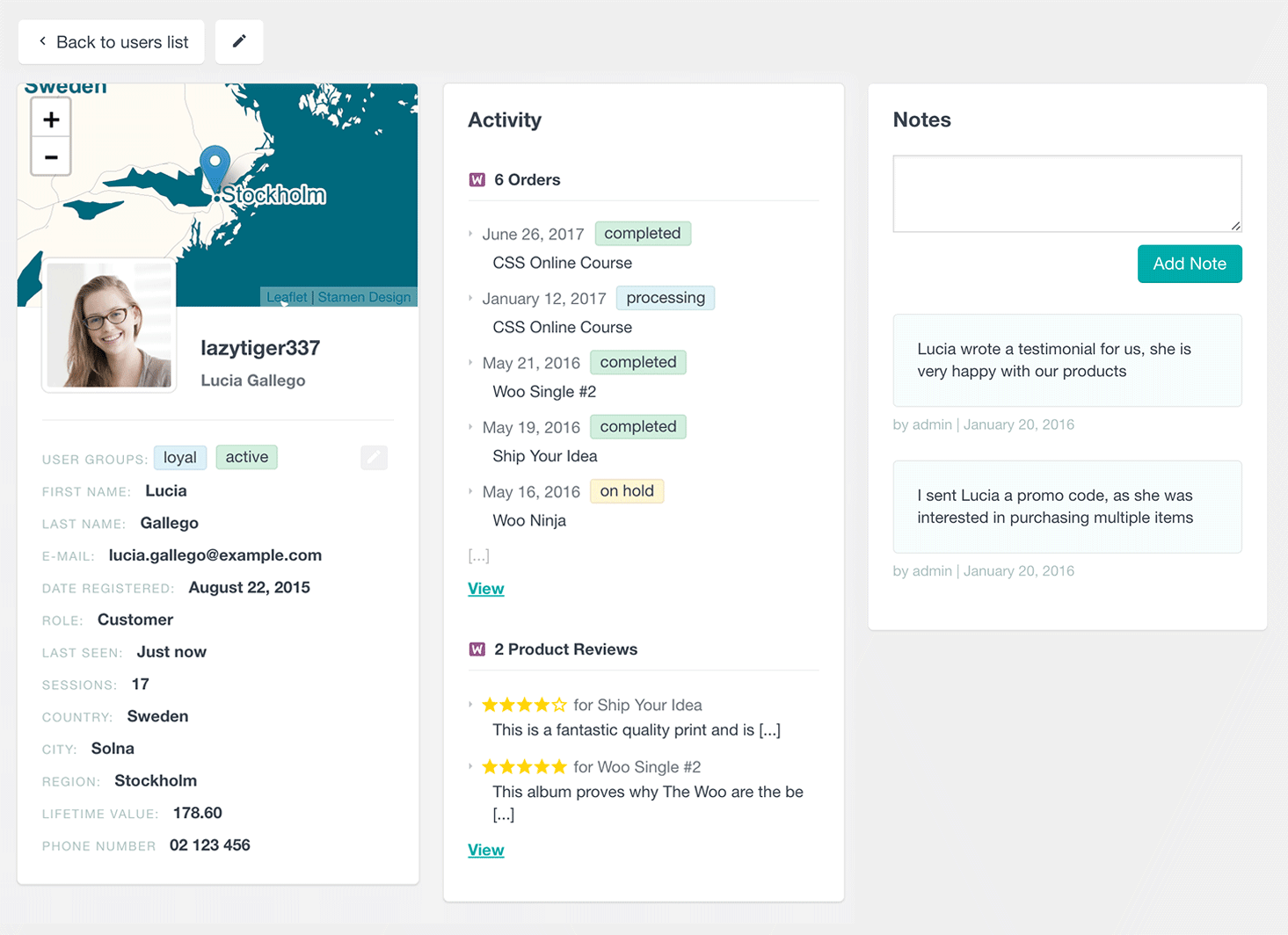
WooCommerce customers’ visited products tracking and purchase history
You can combine the page visit tracking feature with the customer purchase history to get interesting insights. For example, you can find all the customers who have visited a specific product page on your WooCommerce store but have not yet purchased the specific product:
![]()
WooCommerce customer order report
You can also follow all the order history data in aggregate in the WooCommerce orders report section.
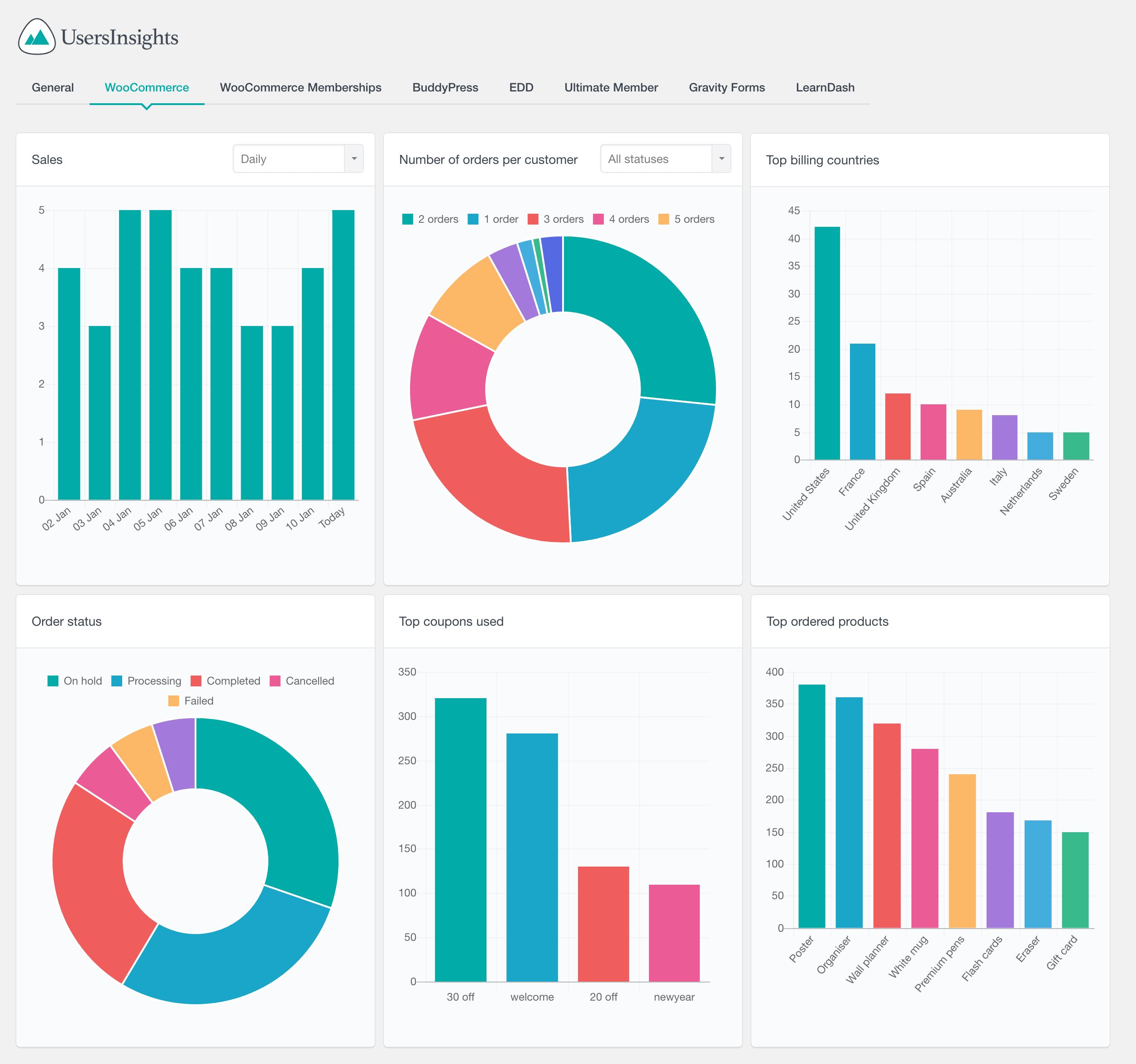
The WooCommerce customer order report is a great way to keep track of your customers’ orders and order details right from your WordPress dashboard. This report shows you the number of sales over different type frames, the average number of orders per customer, the top products ordered, etc.
Creating custom segments based on your customer purchase history
So, using this information, you can create your WooCommerce customer lists by using the segments. You may filter your users based on their activity, loyalty, and customer lifetime value. To do that, you can use the segment feature of Users Insights.
First, you need to create the filtering aspects you will use for your customers. For instance, we’ll filter through our WooCommerce customers’ order history and find out the active repeat buyers in the last month. We can do that with these filters:
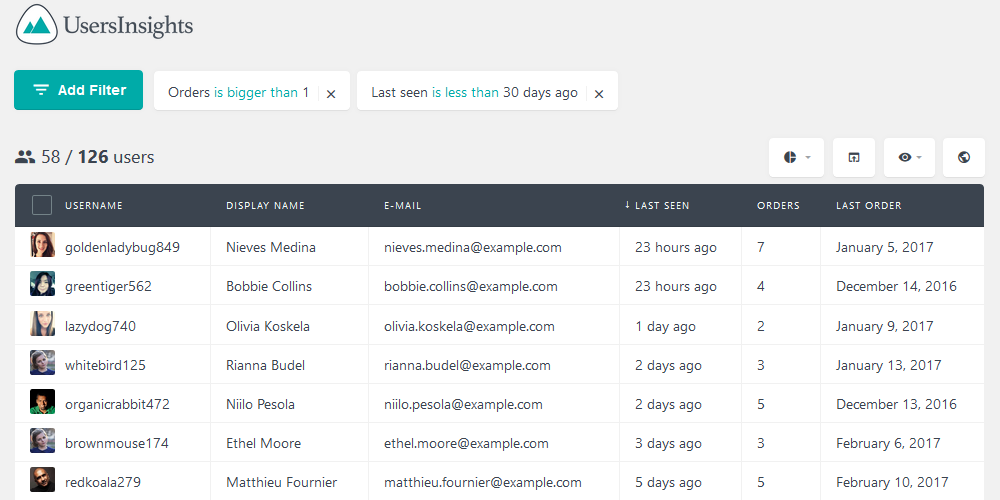
Now, let’s save this list as a segment:
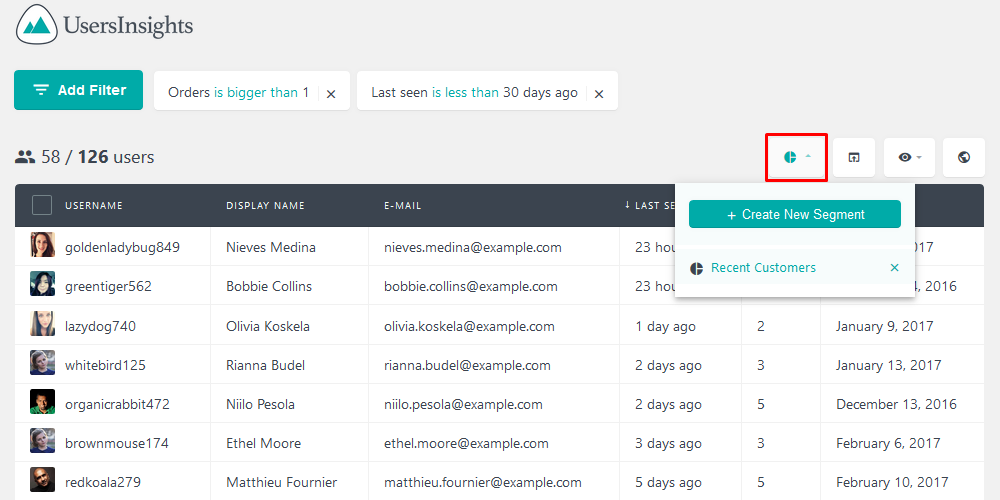
In this way, we can quickly gather a WooCommerce customer list when you click again in that segment in particular.
As mentioned, you can filter and order your customers based on different aspects. For example, you can order your users based on their lifetime value and filter them based on the number of orders. All of this can be seen in this video:
That’s it! Now you know how you can use your WooCommerce customer history to search and filter your WooCommerce customers. You can now segment your customers using their purchase data and create custom marketing campaigns. We hope you will find this article helpful and help you better manage and organize your WooCommerce customers.
